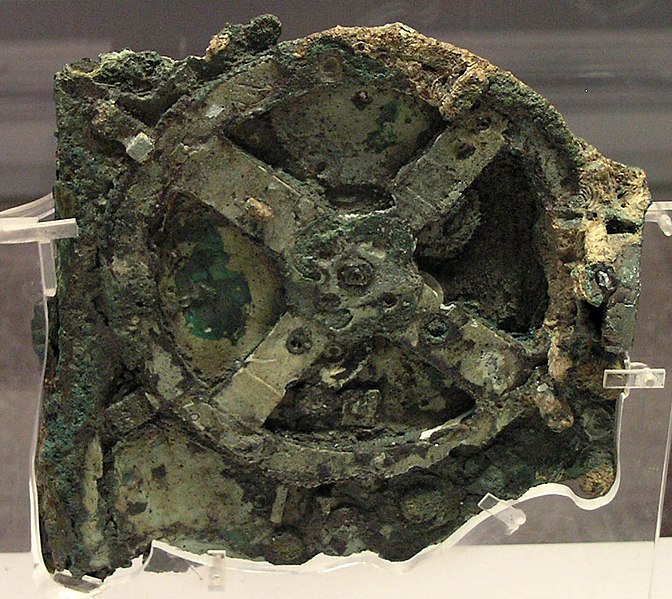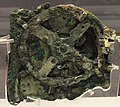Fasciculus:NAMA Machine d'Anticythère 1.jpg

Mensura huius perspectionis: 672 × 599 elementa imaginalia. Aliae mensurae: 269 × 240 elementa imaginalia | 538 × 480 elementa imaginalia | 861 × 768 elementa imaginalia | 1 036 × 924 elementa imaginalia.
Sua resolutio (1 036 × 924 elementa imaginalia, magnitudo fasciculi: 207 chiliocteti, typus MIME: image/jpeg)
Historia fasciculi
Presso die vel tempore fasciculum videbis, sicut tunc temporis apparuit.
| Dies/Tempus | Minutio | Dimensiones | Usor | Sententia | |
|---|---|---|---|---|---|
| recentissima | 10:48, 20 Decembris 2005 |  | 1 036 × 924 (207 chiliocteti) | Marsyas | Fragment principal de la machine d'Anticythère. Le mécanisme consiste en un système complexe de 32 roues et plaques portant des inscriptions relatives aux signes du zodiac et aux mois. L'étude des fragments suggère qu'il s'agissait d'une sorte d'astr |
Nexus ad fasciculum
Ad hunc fasciculum nectunt:
Usus fasciculi per inceptus Vicimediorum
Quae incepta Vici fasciculo utuntur:
- Usus in ab.wikipedia.org
- Usus in af.wikipedia.org
- Usus in als.wikipedia.org
- Usus in ang.wikipedia.org
- Usus in anp.wikipedia.org
- Usus in an.wikipedia.org
- Usus in ar.wikipedia.org
- Usus in ast.wikipedia.org
- Usus in azb.wikipedia.org
- Usus in az.wikipedia.org
- Usus in bcl.wikipedia.org
- Usus in be-tarask.wikipedia.org
- Usus in be.wikipedia.org
- Usus in bg.wikipedia.org
- Usus in bn.wikipedia.org
- Usus in bs.wikipedia.org
- Usus in ca.wikipedia.org
- Usus in ce.wikipedia.org
- Usus in cs.wikipedia.org
- Usus in cv.wikipedia.org
View more global usage of this file.

